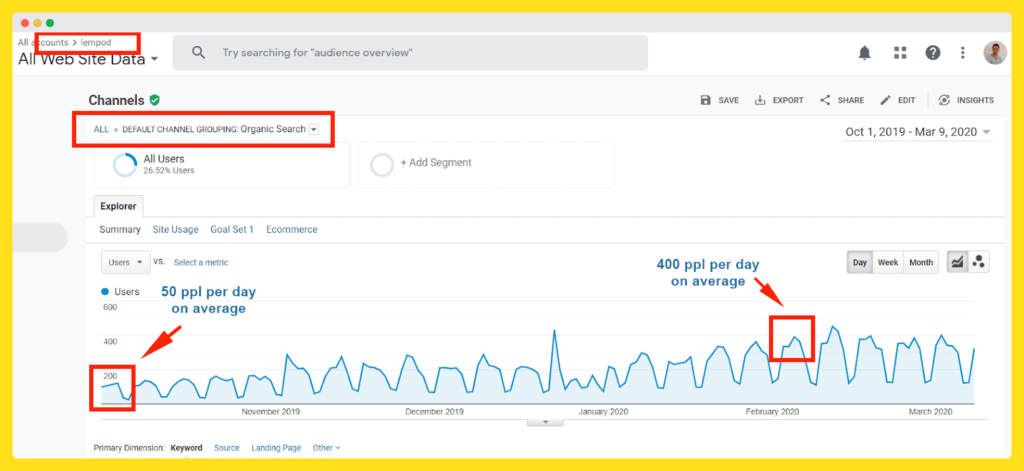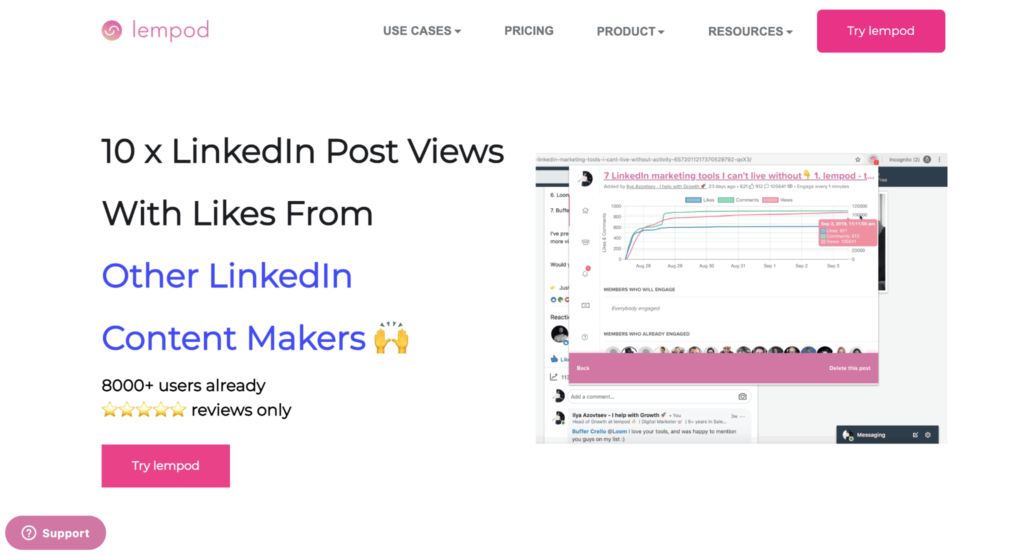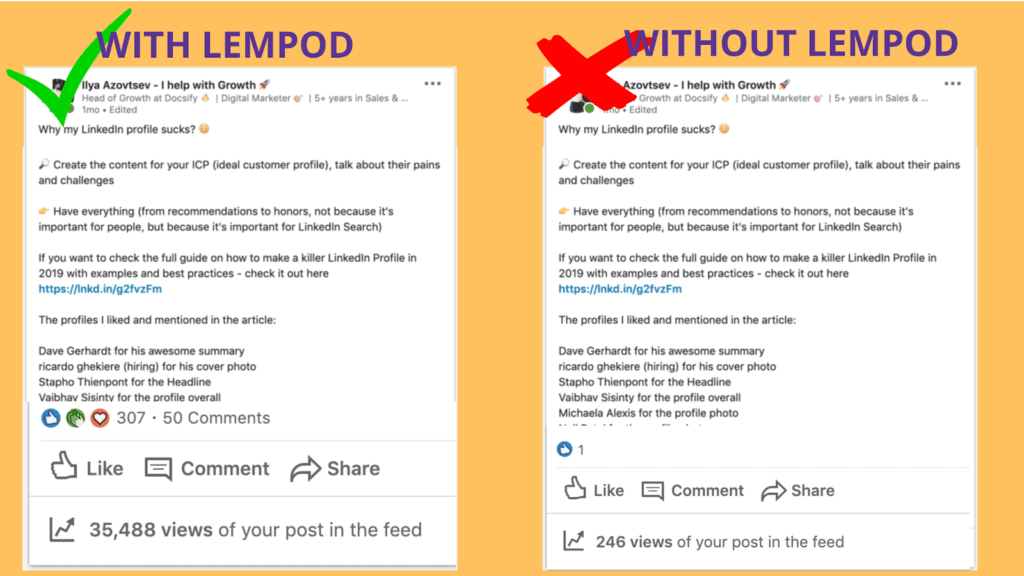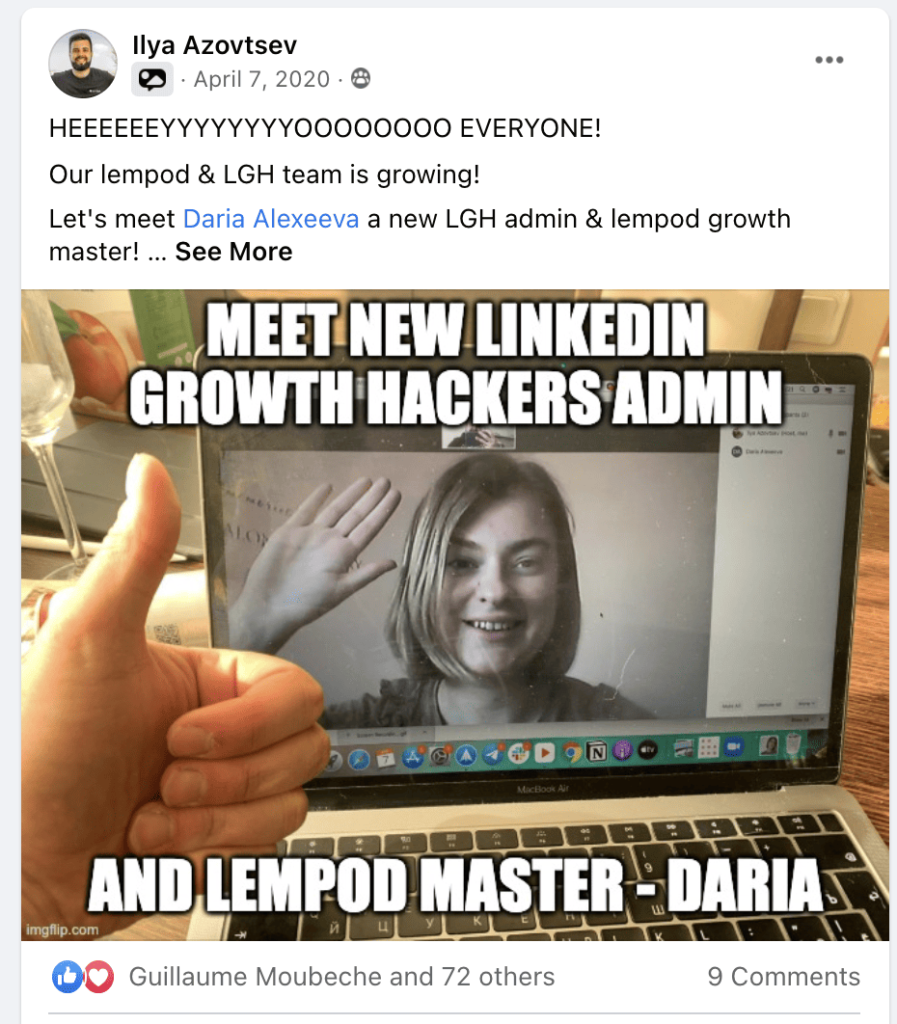My goal is to show the ‘behind-the-scenes’ strategy for growing from 50 to 400+ organic visitors per day in less than four months with consistent content publishing & SEO alone.

Update: Originally, this case study was published back in late 2020, and the company’s organic growth remained relatively stable with organic traffic, but it increased in authority and topical relevancy for top priority commercial keywords WITHOUT the company publishing any new content since our engagement stopped early last year.
Here’s a snapshot of Ahrefs on June 2022, as we no longer have access to their internal Google Analytics. The actual traffic is probably significantly higher than reported.

Without further ado.
In this case-study article, I’ll discuss:
- What made lempod unique
- Its unsexy roadblocks
- Our not-so-genius plan for niche domination
- Brand visuals and messaging analysis
- What I learned managing Linkedin Growth Hackers (FB group)
- How you can replicate these results (and grow further)
If that made you a bit curious, I promise it will be a worthy read.
What exactly is lempod? Brief introduction
In short, lempod is a LinkedIn automation tool that helps you increase LinkedIn post views to reach an audience up to 10 times bigger with your content than before.

This, largest LinkedIn engagement pods marketplace, helps content creators and businesses automatically support each other’s posts with mutual engagement.

It’s a simple Chrome extension that connects with your Linkedin account and does most of the magic for you.
It’s only $5 per month (per pod), and I always joked privately that it is literally like crack for influencers – the more, the better.
What made lempod unique?
Aside from its USP and immediate “wow” factor, the original founding team (Lemlist) played an enormous role in building a passionate community around the product right from the start.

They made every lempod customer feel valued and part of a bigger community. The conversations were about improving messaging, getting higher open rates, Linkedin automation, and so much more.
It is essentially the same team working at Lemlist today.
Later the company got sold, and the team continued working on Lemlist while lempod received new operators.
Unsexy roadblocks
The four biggest roadblocks were:
- Lack of relevant high-intent keywords
- Short-tail keywords were too challenging to rank for due to weak site authority
- The budget didn’t allow for crazy experimentation or rapid publishing
- Slow implementation of feature requests (but that’s another story)
We started with keyword research.
We used Ahrefs to find relevant keywords and low-and-behold; not many people are searching for Linkedin engagement pods.
This forced us to take a step back and explore more general keywords.
Next, we realized that those general keywords usually had tougher competition requiring (besides highest-quality content) many backlinks and good distribution.
The budget didn’t enable us to put more writers to work, increase the publishing rate and start ranking for more keywords sooner. I had to be careful on what keywords to prioritize to progressively rank for tougher keywords while generating some traffic along the way.
Client success = my success.
Our not-so-genius plan for niche domination
Most “out of the box”, weird SEO strategies are usually scams, so watch out! If you’re presented with a strategy utterly different from anything seen before, that’s usually a red flag in my book.
What you should be looking for is a structured and effective content strategy with a pinch of creativity to speed up traction.
That can be distribution, content pruning, backlinks, etc.
Prioritize low-hanging fruits.
If your domain authority (DR or DA) is relatively low, there’s no point in trying to rank for high-difficulty keywords UNLESS you have the budget to go ALL OUT and cover every important keyword ahead of schedule.
While a DA/DR aren’t Google’s metrics, a healthy backlink profile is necessary to rank higher in many instances.
Prioritize keywords that are easiest to rank for according to the backlink profiles.
Should you then ignore high-difficulty keywords initially? Not necessarily.
SEO tools are often faulty, and I’ve repeatedly seen (Read this case study) that keywords with low search volume generate massive traffic and leads. Some showed high difficulty, yet our new websites managed to rank up quickly.
We’ve also noticed that our Linkedin-related posts were getting bigger traction; we relied heavily on distribution for initial growth. In fact, many of the topics we’ve written didn’t have that much SEO potential either.
Establish an ICP (Ideal Customer Persona)
I’ll try to keep this step as simple and as no-bullshit as possible.
Developing an ICP framework is excellent for getting your content marketing team (writers, editors, and designers) familiar with the target audience to align the messaging and writing for consistency, maximum impact, and standardized quality at scale.
Here’s a TLDR:
- Start with your existing users/customers/clients. Who are your most successful customers? Can you draw any patterns?
- What are their biggest pain points?
- Have a few interviews and try to understand what made them work with you and not your competitors.
- Is something obviously lacking, and both the customers and the product team know it? That could be valuable to your messaging.
The more insights you can extract and create relevant patterns, the better you’ll navigate and communicate in the end.
Some companies prefer to create a PDF with customers’ photos with included data. I personally never saw much need for it, but with bigger teams, it could prove useful.
Write *literally* the best content out there
Prioritizing content quality is not unique to this case study.
In fact, I emphasize it with all of our clients.
Why?
It is the backbone of every successful SEO strategy.
Check any prominent brand’s blog, and you’ll see hundreds, if not thousands of articles covering a wide variety of topics. That’s not by mistake.
Mistakes I’ve seen companies make:
1. They hire inexperienced writers who don’t have industry experience. This results in mirage content that provides no real value. The readers leave thinking: “This is nothing new. I feel like I’ve read this article a million times before,” or “This is such a waste of time, I won’t read articles from this company again”.
Inexperienced writers are not necessarily bad; they just require more onboarding, templates, and editor guidance. If that’s handled, it’s not a wrong way to reduce costs.
Unfortunately, bad writers tend to copy content from in-direct competitors, damaging your reputation. Be cautious.
2. No content series templates, efficient workflows, and editors to standardize quality. Writing a single good article is not that hard, but if your SEO strategy requires hundreds upon hundreds of written articles. Or, say you’re trying to dominate a niche, you better have a plan on publishing awesome content week after week.
Mistakes like these can cost you thousands upon thousands of dollars the entire content cycle.
3. They don’t understand that quality content it’s 75% about RESEARCH. Yes. You can have writers who are master wordsmiths (or copywriters, haha), but if they lack resources, information, golden nuggets, insights only experts possess – the content won’t be excellent.
This is where the company should provide internal resources to provide valuable information to writers to ensure quality.
This is also why your writers need to know where to scout out valuable information.
- Are they listening to podcasts?
- Are they asking questions in communities?
- DMing experts with questions?
- Reading niche blogs, Reddit, Quora, Growth Hacker, etc. (depends on the industry)?
Articles should be as straightforward and actionable as possible.
What does that look like in practice?
1. Include many screenshots, videos, pictures, memes, or whatever visuals to help demonstrate your point better.
At lempod, we’ve understood the importance of visuals.

Readers were assisted with visuals to better understand how to perform each step along the way.
The goal should be to leave your readers inspired, feeling like they’ve learned something practical and are ready to take action.
Here’s one of the top-performing lempod articles that Ugi, the founder of Contenthorse, wrote.
It generated 200+ customers for lempod. It was a huge success.
All Ugi did was write in a way that completely simplified their process and helped the reader see they can do it themselves.
2. If your paragraph can be halved and still perfectly understood, DO IT.
Your readers will forever thank you and read more of your articles, simply for saving them time.
No one wants to read a 20-minute article and feel like they’ve wasted time.
Here’s are a few actionable tips:
- Create a content checklist – primarily used for writers/editors to polish their content after finishing their first draft. A checklist should list words to avoid, remove, include, etc.
- Writers should re-read their sentences and look for ways to reduce the number of words inside each sentence – This (old) little practice will ensure you’re not just vomiting text, but actually being thoughtful about it. The difference in content quality will be significant.
- Read the sentences out loud – Again, this is another no-brainer for many of the senior writers. Unfortunately, many smaller companies and agencies working with inexperienced writers write paragraphs that, when read out loud, sound poorly thought-out and structured.
A lot more goes into this, which I expand on in my other articles.
Bonus: Content distribution
Depending on your product and your industry’s state, you might be required to focus on distributing content RATHER than focusing on SEO alone.
Here’s when that’s the case:
- Your product isn’t something people search for on Google to find
- Your product is in a new niche/market that’s yet to mature
- Your target audience is somewhere else (think Slack, Discord, Twitter, Facebook communities, or wherever your audience hangs out)
Your goal is to entertain and inform them natively on those platforms and groups. Don’t try to sell them anything or try to pull them to your website → it rarely works.
Brand visuals and messaging – Analysis
What’s the first thing that comes to your mind when you see these two images?

Lempod’s website

Linkedin Growth Hackers (FB group) post
- Simple
- Actionable
- A TON of positive energy
The website doesn’t attempt to impress you technology-wise.
Why would it?
The product itself is lightweight and easy to set up and use.
The same applies to its brand voice throughout social and blog. It’s light, fun, positive, colorful → full of positive energy, and always simple and practical.
What I learned managing Linkedin Growth Hackers (FB group)
As you start building out a community, it’s common for companies to assume it’s okay to straight out promote the hell out of their products/services and blog posts.
That’s not smart and here’s why.
Facebook groups (and most other platforms) gain popularity and value through member discussion that is purely organic.
The moment you start heavily promoting your product and ignoring the organic community aspect by treating your members as an audience to advertise to is the moment they get annoyed and want to leave.
This is also one of the main reasons why big communities with long-term success almost never promote the founder’s business and always prioritize keeping the dialog, providing never-ending value RIGHT ON the platform without trying to send them to their websites.
Additionally, running a community is a great way to gain insights into what your target audience wants to consume.
The lempod community had dozens of questions among its members that were left unanswered. We used this opportunity to write about it on our blog and then shared it in the group where relevant.
Conclusion
You might get a feeling that this article (and our strategy) was all over the place.
“So what made lempod grow so fast?”
- In-depth keyword research
- Actionable content with a unique brand voice (assisted by establishing an ICP) that provides an answer to our ICP’s biggest questions
- Focusing on low-hanging fruits first, then going after more difficult keywords
- Going hard on distribution and community building
- Brand visuals and messaging to glue it all together.
Have any questions? Shoot me a message, and I’ll be happy to answer.
Are you ready to crush it with keyword research and write the best articles out there?
Then go ahead!
Or – you can let my team do it for you. It’s your call.
Book a 30-minute Zoom discovery call to learn how we can help you.


